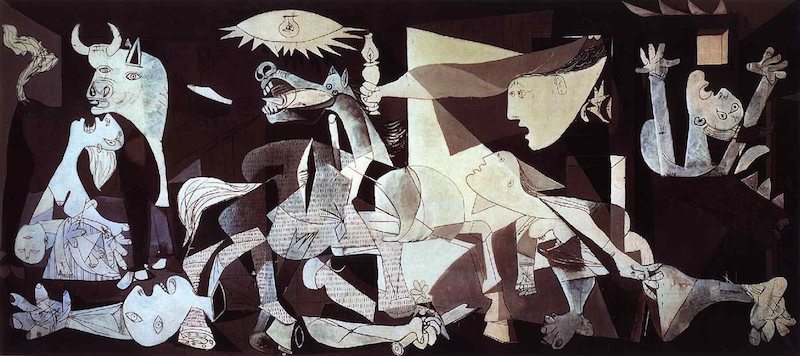Guernica by Pablo Picasso
Episode #2 of the course “Most famous paintings of all time”
Year: 1937
Type: oil on canvas
Dimensions: 349 cm × 776 cm (137.4 in × 305.5 in)
Location: Museo Reina Sofia, Madrid, Spain
One of the most important painters of the 20th century, Spanish-born Pablo Picasso was already a famous name in Modernist and Cubist art by the time he released his masterpiece Guernica in 1937. An outspoken response to the violence of the Spanish Civil War in particular, the painting depicts Picasso’s interpretation and reaction to the bombing of Guernica in northern Spain. The 11-foot-wide oil painting on canvas speaks in grayscale about the horrors of war, especially those inflicted on civilians. However, interpretations of the painting’s meaning are oppositional, and scholars continue to debate.
Although Guernica is painted in Picasso’s highly cubist and abstract style, which is known for compressing the impressions of 3-dimensional visuals into a 2-dimensional space—essentially, “flattening” a cube into a square—many scholars agree on the overall subjects of the painting. In the center, a horse is falling after being pierced by a lance, which can be seen entering its back and exiting its stomach. Under the horse is a fallen soldier, perhaps missing body parts. On the left-hand side of the painting, a bull stands over and watches a mother cradling a dying child, and on the right-hand side of the painting hangs a floating female figure over a running figure and a person with outstretched arms.
The painting creates a feeling of intense anxiety—anyone looking at it instantly knows that whatever is being shown is painful. While Picasso claimed he simply painted the objects “for what they are,” art critics, fans, and scholars continue to debate. Whatever interpretation each makes, they all agree that some of Picasso’s most significant and moving elements are the use of grayscale, the positions of the figures, and the use of juxtaposed urban and rural images.
Share with friends

